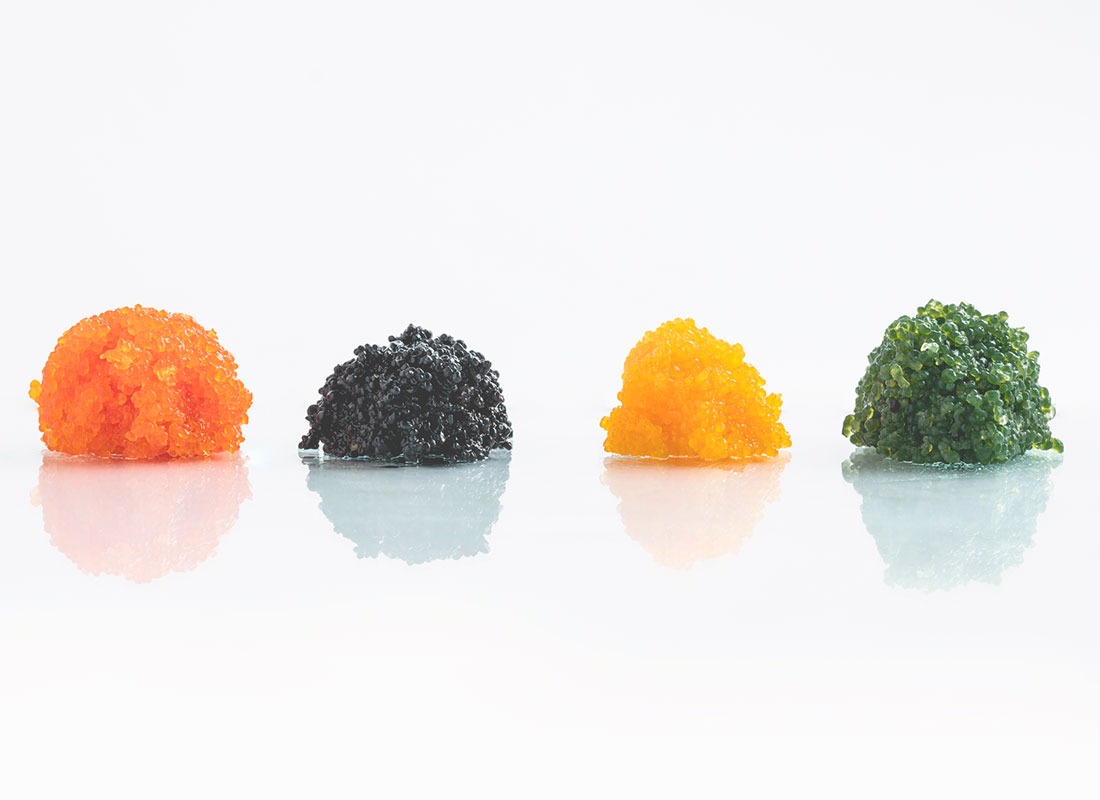Seaweed has already gained popularity in the kitchen and now the time has come to eat caviar produced by seaweed. Seaweed caviar is a plant-based food with no animal ingredients. Both vegetarians and vegans will appreciate this green sustainable product. Seaweed caviar is a great addition to take your dish to the next level. Not only brings seaweed caviar a specter of color on the plate but also gives the food bite and a delightful taste.
What is seaweed caviar?
Seaweed caviar is the environmental choice and ‘roe’ of the future. It’s a plant-based alternative to different types of caviar. The kelp caviar can replace different roe including lumpfish rose, trout roe, salmon roe, and cod roe.
Seaweed also is known as kelp can be categorized into three types of algae; red, green, and brown. Seaweed is not a real plant, but a multicellular large algae, so-called macroalgae. It’s rich in vitamins, minerals, and other important nutrients. Furthermore, it can be a great source of omega-3 fat and vitamin B12, as you will find in roe too. Seaweed contains iodine and tyrosine, which support thyroid function. It’s not a surprise, that vegan and vegetarian seaweed has become a popular source of proteins.
Kelp is packed with umami, a savoury flavour. It is one of the five basic tastes. The other four being sweet, salty, sour, and bitter. Umami is probably the least known taste as it is a newer taste, but a delightful and unique taste. The taste of umami serves as a signal to the body that the body has consumed protein. Umami triggers the secretion of saliva and digestive juices, which facilitate the smooth digestion of protein.
Seaweed caviar is rich in taste just as the fish caviar. Of course, the taste is not the same down to every little detail, but pretty close and on the other hand why should it be? This sustainable ‘green’ product creates a new and more exciting experience, which you can consume with a good conscience.
A sustainable production
Seaweed caviar is harvested from the seabed and made from kelp. Experts of sustainable seaweed in France and Norway ensure a healthy and sustainable production from the very first beginning. Seaweed has no animal ingredients but is filled with vegetable ingredients. The end product is produced in Denmark. Seaweed is dried and turned into a powder. Hereafter, the powder is processed with salt, spices, water, and citric acid which all drips into a liquid. The final results become enviously worthy pearls.
Seaweed caviar comes in various flavours to spice up your dish. The flavours include salmon and lumpfish and have beautiful natural flavours. Seaweed caviar is among other things an alternative to lumpfish roe, cod roe, and trout roe. But seaweed caviar also comes in other flavours than fish – wasabi is one of them.
Benefits of eating seaweed caviar
Seaweed caviar has several benefits. Not only is it a sustainable product, but your body will also benefit from it. Check out some of the great benefits below and why you should consider cooking with seaweed caviar next time.
Benefits from the nature of seaweed caviar:
- Sustainable, first of all
- Secures the future fish stocks, biodiversity, and maritime ecosystems
- Produced by sustainable seaweed from France and Norway
Benefits for your body:
- Healthy micronutrients and preservatives
- Rich on animal and plant protein
- Cholesterol-free
- Low-fat
- Low-salt
Other reasons you should try seaweed caviar:
- Seaweed caviar can perfectly replace the fish caviar and fish roes
- Not only a product for vegan and vegetarian since it has a great taste and texture
- Spice up the plate, both hot and cold dishes
- Can be used in more ways than caviar
- Long shelf life, up to three months after opening
- Do not need refrigeration or freezing
- Will not go rancid, because it does not contain fish oil
- Made with only natural colourants
- Does not discolour other foods, as fish caviar does
The damage of eating fish caviar
Black caviar is considered to be exclusive and delicate amongst many. But the harvest of the caviar, the fish roe, has its price. Oceans and seas are overfished due to the high demand. This results in the destruction of the marine ecosystems as the oceans become polluted, the fish are affected by metals and oil, the sea life and its animals decompose, to name a few problems. The loss of marine life and this biodiversity cannot be replaced. Caviar is not a sustainable food.
Eating fish or other seafood with heavy metals can also damage the human body including damage and alter the organs.
The Bottom line
Seaweed caviar is a way of caring for food, the planet, and health. With great taste and texture, the seaweed caviar provides a unique experience. The choice of seaweed is not only for vegans and vegetarians, it is for those who care for the environment, those who love experiments and to get a great dining experience. By eating seaweed caviar you can help reduce the carbon footprint.



